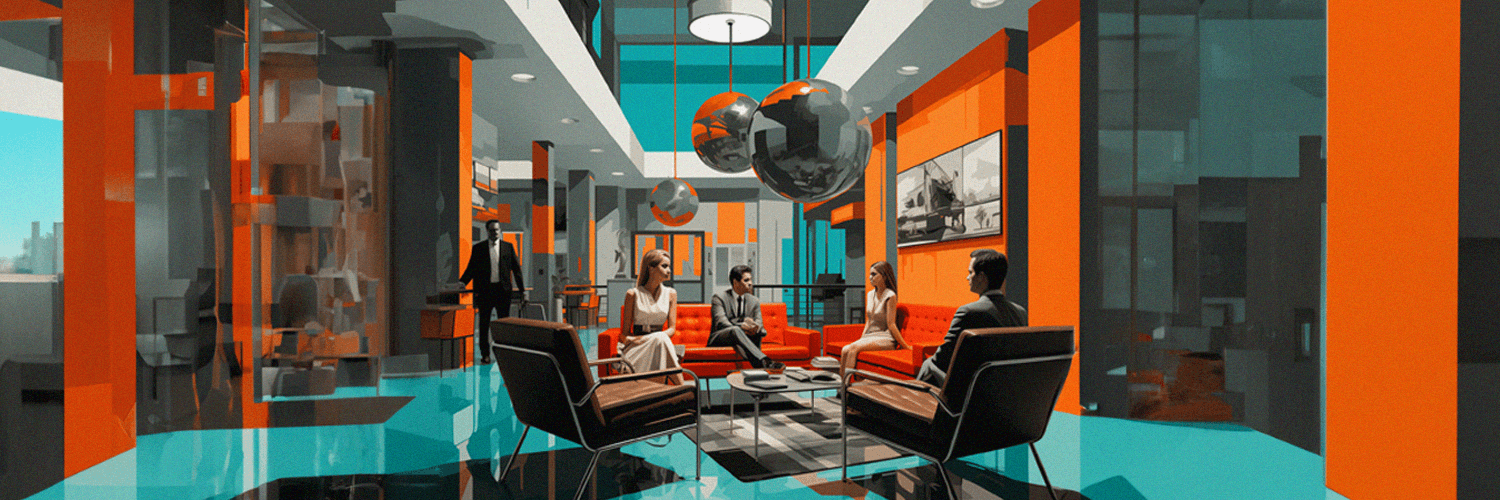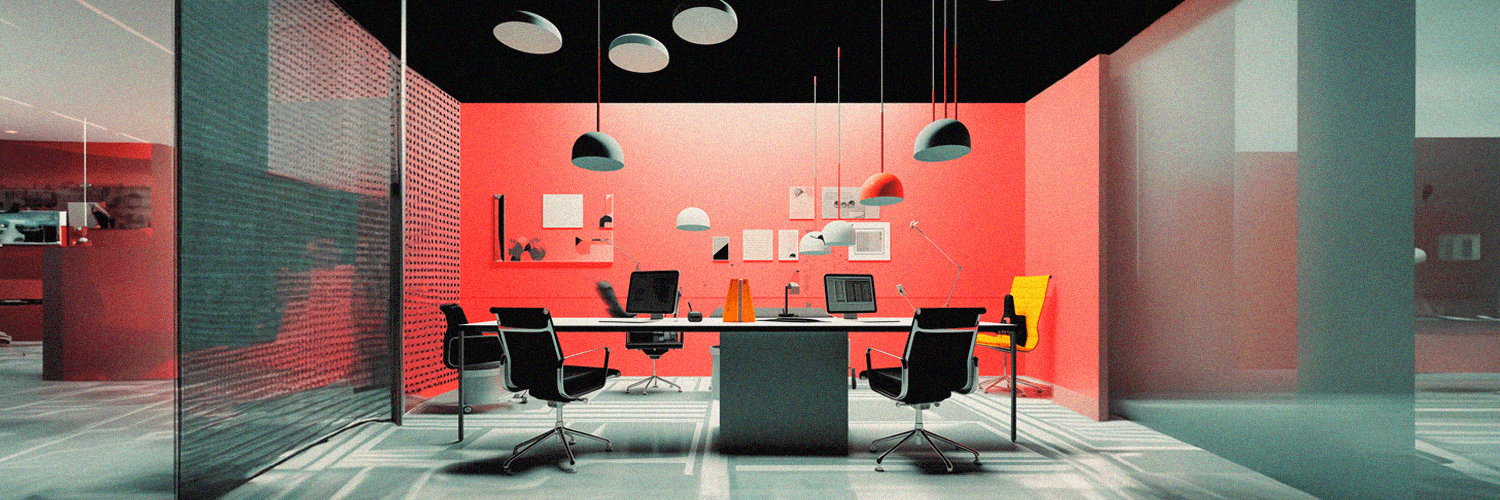The way we work has changed permanently. Offices are no longer the default; technology is the new foundation of work experience. As organizations balance hybrid flexibility, evolving real estate strategies, and growth ambitions, long-term workplace technology planning has shifted from a “nice-to-have” to a strategic necessity. Future-proof tech isn’t just about convenience—it’s about sustaining productivity, optimizing investments, and enabling resilience for whatever comes next.
TL;DR:
- Workplace technology has shifted from a "nice-to-have" to a strategic necessity. Moving from temporary solutions during the pandemic to long-term, scalable technology investments is critical for organizations adapting to hybrid work models and new real estate strategies.
- As hybrid work evolves, real estate strategies are shifting towards more flexible office spaces. Companies need technology that can adapt to these changes, supporting flexible scheduling and efficient space management. Scalability is crucial to ensure workplace tech can grow with the company, seamlessly accommodating new locations, headcounts, and work models without disruption. This flexibility and adaptability in technology are essential to navigate both current and future workplace dynamics.
- Future-proof workplace technology must grow with the organization, supporting larger teams and expanding locations without performance degradation. It should also integrate easily with existing platforms (e.g., HR, communication tools) and offer data-driven insights on space utilization, work patterns, and overall performance to guide strategic decisions.
- An intuitive interface promotes quick adoption, and a strong vendor roadmap ensures the technology evolves with emerging business needs, enhancing long-term value.
- YAROOMS as a future-proof solution: YAROOMS offers a flexible, scalable platform that adapts to hybrid, remote, and office-first work models, integrates with essential systems, and provides valuable analytics to optimize workspace management.
Workplace Management: From Crisis Mode to Long-Term Planning
Pandemic Context
When the pandemic hit, companies didn’t have the luxury of long-term thinking. They rushed to stand up remote work tools, enforce distancing protocols, and manage schedules—reacting to urgent needs rather than architecting sustainable systems. As a result, many workplaces ended up with a patchwork of isolated tools: basic desk booking apps, scattered communication platforms, and manual processes that weren’t designed to scale or integrate.
Today, this ad-hoc approach has revealed its cracks. Organizations are now re-evaluating these short-term fixes and recognizing the need for a cohesive, future-ready workplace technology ecosystem.

The Shift Back to Stability
The pendulum is swinging back—not to pre-pandemic norms, but toward a more intentional, permanent workplace model. By early 2025, average office occupancy rates in major U.S. cities reached 65-75% of pre-pandemic levels, a significant jump from just 50% in 2023.
Most companies have settled into defined work models – hybrid, in-office, or remote-first. Hybrid work remains the dominant model with 67% of firms offering flexibility, particularly in technology and insurance where over 90% embrace it, while the "3-2" hybrid model and structured approaches are favored, and only 6% anticipate fully remote operations by year-end.
Despite tightening return-to-office policies influencing 54% of companies and 34% planning to increase in-office days, less than 55% of the workforce will be fully office-bound, as employee preferences indicate that 33% find flexibility improves work-life balance, and nearly two-thirds of remote-capable Gen Z workers prefer hybrid environments. The real differentiator now isn’t where work happens—it’s how well the workplace supports it.
Why Long-Term Planning Is Possible Again
With work models now clearly defined, companies have the opportunity to move from reactive, crisis-driven decisions to proactive, strategic planning. There is finally the time and space to re-evaluate the quick technology fixes adopted during the pandemic and invest in sustainable solutions that will serve the organization for years to come.
3 Workplace Shifts That Demand Future-Proof Technology
The pandemic triggered a rapid, improvised evolution of the workplace. Now, three major shifts are driving the next phase of transformation—one that demands smarter, more strategic technology choices built for longevity, not just immediate needs.
Real Estate Changes Are Catalysts for Smarter Tech Decisions
Across industries, hybrid work is reshaping real estate strategy. Around 70% of companies plan to reduce their office footprint within the next two years, aiming to better align space usage with new work patterns. Consolidating locations, downsizing, or moving into smaller, centralized hubs gives organizations a rare “clean slate” moment: a chance to rethink not just where work happens, but how technology supports it.
Critically, space planning can no longer happen in isolation from digital planning. Workplace technology must be treated as essential infrastructure—just as fundamental as HVAC or Wi-Fi. The right tech can help organizations maximize small spaces, manage flexible attendance, and provide seamless hybrid experiences.
Gensler’s global workplace research reveals a telling opportunity: while employees currently spend about half their time in the office, they believe they need to be on-site for roughly two-thirds of their workweek to perform at their best. What’s missing? Spaces that enable focus, creativity, restoration, and connection.
The traditional office space is no longer the center of productivity for many organizations. Instead, it has transformed into a hub for collaboration, brainstorming sessions, and social interaction. Organizations are reimagining their office spaces to accommodate this new role. Flexible workstations, comfortable lounges, and inspiring meeting rooms are becoming the norm. These collaborative spaces are designed to cater to different work styles and preferences and boost productivity, creativity and collaboration. Smart workplace technology helps bridge this gap, ensuring that the office experience is intentional, dynamic, and worth the commute.
Growth Requires Scalable, Flexible Workplace Technology
Whether companies are scaling from 50 to 200 employees or expanding into new international markets, growth introduces complexity. New people, new locations, new collaboration needs—and more pressure on systems to deliver consistent, frictionless experiences.
Future-proof workplace technology must be able to scale gracefully. It should handle growth across headcount, departments, and geographies without introducing operational bottlenecks or costly upgrades. Importantly, it must also be flexible: as teams adopt new work styles or as business strategies shift, the technology must evolve alongside them—not stand in the way.
When workplace tech is built to scale and flex, growth isn’t disruptive. It’s empowering.

Evolving Hybrid Work Models Need Adaptive Technology
Hybrid work is here to stay, but what it looks like continues to evolve. Organizations are continuously fine-tuning policies around desk sharing, meeting room usage, and in-office requirements based on employee feedback and business priorities. Flexibility isn’t static—it’s a moving target.
Managing workspaces with spreadsheets may work for a while, but a modern workplace management platform gives you the tools to run a dynamic, high-performing office. Look out for features like:
- Desk and room booking systems
- Hybrid scheduling tools
- Interactive floor plans (a must when you consider that employees spend an average of 27 minutes a week searching for meeting rooms and desks!)
- Employee wayfinding and visitor management
- Centralized resource management
Beyond flexibility, the best platforms capture valuable data about how spaces are actually being used. Over time, these insights allow organizations to refine their hybrid strategies, right-size their spaces, and continuously improve the employee experience. Future-ready technology doesn’t just support hybrid work—it helps perfect it.
What Makes Workplace Technology Future-Proof?
The right workplace technology isn’t just a tool—it’s an investment in your organization's long-term agility and resilience. But not every system is built to go the distance. To future-proof your workplace technology stack, you need solutions that are built on six core principles:
Scalability Across Teams, Locations, and Headcount
Scalability isn’t just about handling more users—it’s about ensuring that as organizations expand across new locations, departments, and even countries, their technology doesn’t buckle under pressure. A scalable workplace platform must support thousands of users and resources without performance slowdowns, hidden fees, or the need to constantly reconfigure the system. Growing businesses require scalable solutions, but outdated software often lacks the flexibility to grow with your company. This forces businesses to invest in expensive workarounds or additional systems, further increasing costs.
True scalability allows companies to grow at their own pace, confident that their tech infrastructure can flex with demand instead of becoming a bottleneck.
Flexibility to Support Evolving Work Models
Hybrid today, office-first tomorrow, remote-first next year—work models are fluid, and your tech must be too.
Legacy systems are vulnerable to crashes, leading to unplanned downtime, which directly impacts productivity, project timelines, and customer satisfaction. The cost of downtime has risen significantly over the past two years, with businesses facing increased financial losses.
Future-ready platforms support flexible scheduling, hot desking, remote collaboration, and dynamic space booking—all within one intuitive system. When your work model shifts, your technology should move with it effortlessly.
Robust Integration Capabilities
As technology advances, integrating outdated software with newer platforms becomes more difficult, if not impossible. Outdated systems often create data silos where information is trapped in isolated systems, making it difficult for teams to access and share crucial data. This fragmentation leads to inefficient workflows and can stifle collaboration across departments and hampers the ability to streamline processes.
Therefore, workplace tech doesn’t exist in a vacuum. It must connect seamlessly with your broader digital ecosystem—calendar platforms, communication tools, HRIS systems, access controls, and more. Look for open APIs, native integrations with platforms like Microsoft 365 or Google Workspace, and active development pipelines that expand integration options over time.
Analytics and Optimization Features
Data-driven decision-making is crucial in today’s business world, but many older systems lack robust analytics capabilities. Without access to real-time data insights, your business could be missing opportunities to improve processes or spot emerging trends.
Future-proof technology doesn’t just manage spaces—it provides deep insights into how those spaces are used. Look for platforms that offer occupancy analytics, hybrid work pattern tracking, and customizable reporting. The goal: empower better real estate decisions, operational strategies, and employee experiences over time.
User-Centric Design and Adoption Support
Even the most powerful tech falls flat if it’s not easy to use. Avoid workplace management software that's complex or difficult to use. Instead, choose one with a clean, easy-to-navigate interface. The goal is for employees to manage their workspace efficiently, not struggle with a complicated tool. Easy-to-use software leads to quicker adoption by teams, enhancing productivity and achieving goals more effectively. Remember, future-ready platforms are intuitive, mobile-accessible, and built with diverse user needs in mind, including multi-language support and self-service onboarding tools.
High adoption isn’t a bonus—it’s essential for realizing your tech’s full value!
Strong Vendor Vision and Roadmap
Technology isn’t a one-time purchase—it’s a partnership. The vendors you choose should be actively investing in product improvements, responding to customer needs, and aligning their roadmaps with the evolving future of work. A strong vendor vision ensures your tools stay relevant long after the ink dries on the contract.
Implementing scalable workspace management software ensures that an organization can adapt seamlessly to future growth and technological advancements. It allows for effortless integration of new features and tools, maintaining operational efficiency and minimizing disruptions.

Flexible, Scalable, Ready for What’s Next: YAROOMS Workplace Management Platform
Future-proof workplace technology is already here. YAROOMS was designed from the ground up to meet the real demands of today’s and tomorrow’s workplaces.
Designed to help fast-growing businesses stay agile, YAROOMS offers a complete workplace experience platform that simplifies space management, improves attendance visibility, and supports hybrid work schedules – all in one easy-to-use system.
Whether you’re expanding to new locations, rethinking your office layout or just optimizing occupancy, YAROOMS gives you the tools to act with confidence. From advanced room reservation and desk booking to real-time workplace analytics, it empowers you to design spaces that truly support your people now and in the future. It scales effortlessly across teams, locations, and growing headcounts, ensuring consistent performance even as demands increase.
Designed for flexibility, the platform adapts easily to shifting work models—whether hybrid, remote, or office-first—without requiring costly overhauls. It integrates seamlessly with essential platforms like Microsoft 365, Google Workspace, and HRIS systems, and its open API allows for tailored workflows that fit diverse digital ecosystems.
More than just a booking tool, YAROOMS delivers deep analytics on space utilization, occupancy trends, and hybrid work patterns, providing organizations with actionable insights to optimize resources and plan strategically. Its intuitive design ensures high user adoption, with mobile access, multi-language support, and a user-friendly interface that simplifies everyday interactions.
Critically, the platform is backed by a strong, forward-looking product vision, with frequent updates and innovations shaped by real-world customer feedback. In a world where the only constant is change, YAROOMS offers companies not just a way to manage their workplaces today, but a partner to help future-proof their success for the years ahead.
Long-Term Tech Is a Strategic Advantage
The urgency of reactive tech buying is behind us. Organizations today have a rare opportunity: to invest deliberately in workplace technologies that will grow with them, flex with the market, and adapt to the future of work—whatever shape it takes.
Building a long-term technology strategy isn’t just smart; it’s transformative. Companies that future-proof their workplace tech will not only weather changes—they'll lead through them, creating work environments that attract top talent, maximize resources, and fuel sustainable growth.
Now is the time to rethink your workplace technology. The future is flexible, scalable, and built to last. Make sure your tools are too.


.png)









